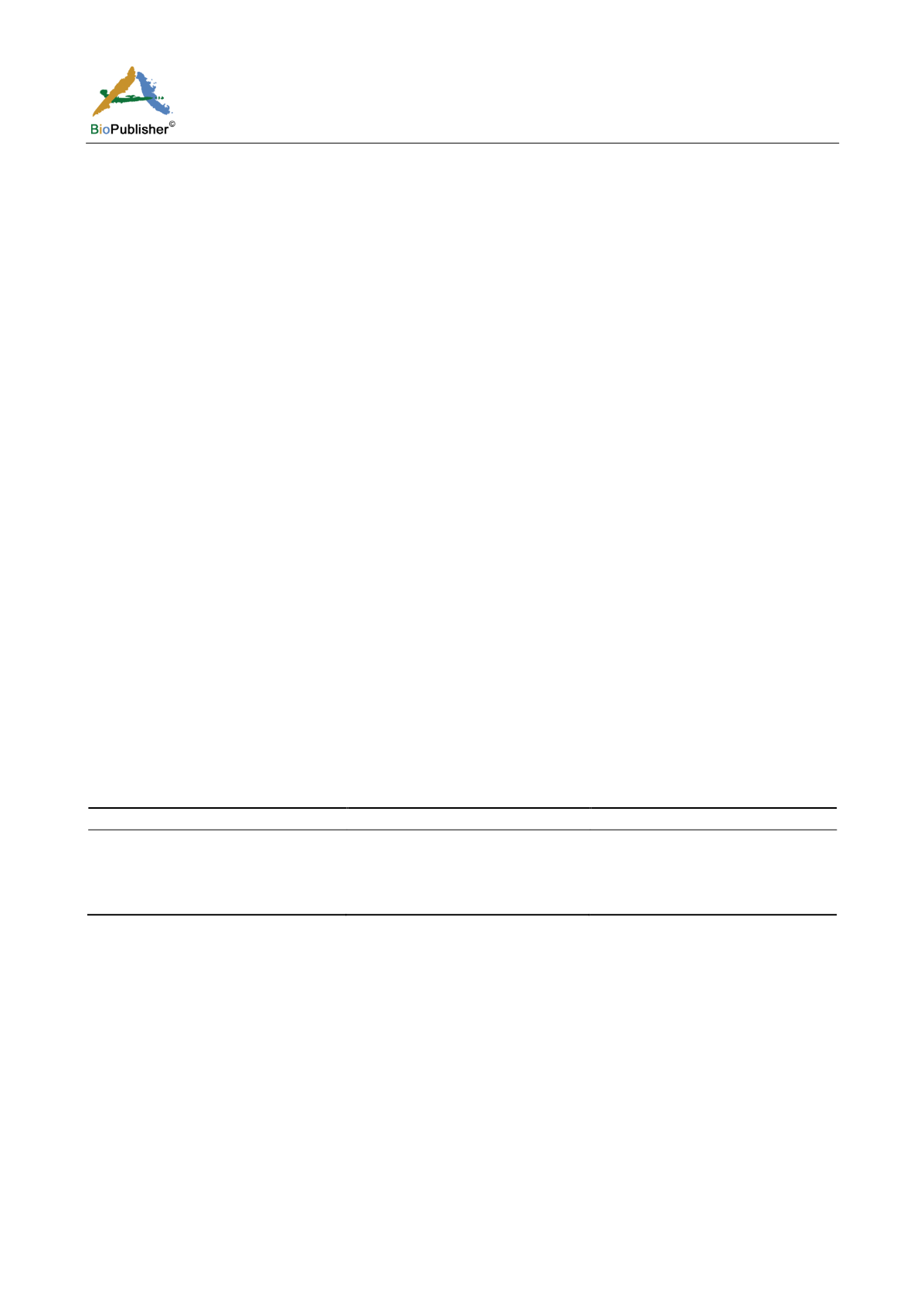
International Journal of Marine Science, 2017, Vol.7, No.24, 229-246
231
Microscopic examinations
Direct wet mount techniques (skin scrapping: taking smear mucus cells and scales) and gill biobsy or gill clip (at
which a gill filament is removed for microscopic diagnosis).
1.5 Histopathological examination
Samples (skin, fin and gills) were carefully removed from examined
Dicentrarchus labrax
then fixed in neutral
formalin, dehydrate in ascending grades of alcohol and clear in xylene. The fixed tissues were embedded in
paraffin wax and sections of five microns were caught by using Euromex Holland microtome. Sections were
stained according to Harris Haematoxylin and Eosin method (Agius and Roberts, 2003). Then sections were
examined and photo taken microscopically.
1.6 Treatment trials for
Amyloodiniosis
1.6.1 Supplemented antiseptic and route and dose of administration
The selected antiseptic was hydrogen peroxide H
2
O
2
20%. It was added within a dose and duration according to
(Montgomery - Brock et al., 2001).
1.6.2 Bath route
Hydrogen peroxide 20% was added in two doses 100 ppm, 200 ppm in a treated plastic container with a capacity
(10 liter) far from the rearing tanks and treat for aduration of exposure 30 minutes for Amyloodiniosi
s
and the
treatment was repeated after every six days.
1.6.3 Experimental design
A total of 120
Dicentrarchus labrax
fingerlings were divided into four groups of 30 each and distributed equally
in fiberglass tanks size (1000 L). Each treatment was performed in triplicates. Four groups of
D. labrax
, the first is
apparently health as control (G1) and the second was the clinically infested group (G2). The third infested was
immersed with H
2
O
2
at 100 ppm/L (G3) and the fourth infested immersed with H
2
O
2
at 200 ppm/L (G4). It was
added at 100ppm, 200 ppm as water bath in 10 liter plastic container for 30 minutes, then returned to rearing tank
(1000 L). The experiment was inspected daily for 14 days and the clinical signs and mortality was recorded. The
data on mean mortality intensity of infection and prevalence rate were recorded in first week &second week. The
mean of length & weight of used fishes were reported in Table 1, Figure 1 and Figure 2.
Table 1 Comparison of Length and Weight (gm) among treated groups No. (%) after (30 min.) treatment
Length (cm)
Weight (gm)
Control –Ve(G1)
6.98±0.31
a
7.43±0.19
a
Control +Ve(G2)
7.68±0.58
a
7.77±0.28
a
100 ppm( G3)
7.31±0.45
a
5.13±0.47
a
200 ppm (G4)
8.05 ±0.68
a
6.33±0.39
a
Note: Means within the same column carrying different superscripts are sig. different at P < 0.05 based on Tukey's Honestly
Significant Difference (Tukey’s HSD)
There was no significance difference between the length and weight in treated and non-treated groups.
1.7 Statistical analysis
Statistical analysis was made on all data that present in this study with the computer program (
Statistical Package
for Social Sciences
)
SPSS
. Differences among groups were assessed by means of analysis of variance (ANOVA).
Subsequently, significance of differences between values was tested with the LSD post-hoc test (least significant
difference test) to detect particular differences between groups. Values are represented as mean ±standard error
(mean ±S.E.M). Significance indicated in figures and tables by an asterisk (*) was taken as
p
<0.05.
2 Results
2.1 Clinical signs and post mortem changes
The infested European seabass
Dicentrarchuslabrax
with
Amyloodinium ocellatum
appeared distressed, emaciated,
and anorexic and showed flashing behavior. Also, there were gasping of air rapid gill movement and lying on the


